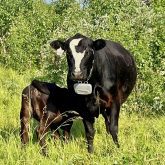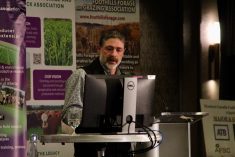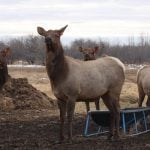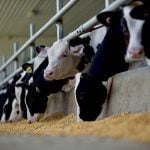We live in a world of band-aid solutions, symptom solvers and we are all looking for that next magic bullet. Agriculture has become dependent on these quick fixes to address symptoms. If there is an issue in agriculture, such as a pest, a weed, or a parasite, then somewhere in agriculture we have developed a band-aid solution to address the symptom. My dilemma is that most of these band-aids never address the real problem. If we can figure out what the problem is, there is no need for the symptom solver that we need to repeat year after year. That being said, I have found one magic bullet that we use here at Greener Pastures Ranching on a regular basis. It is absolutely amazing and could revolutionize the cattle industry.
Read Also

What to know before you go to Agribition 2025
If you’re attending Agribition 2025, this is the place to find out about tickets, dates and what’s happening this year.
I am very excited to share this with you.
But first, let’s look into the some of the problems that we might need to address in agriculture. Most of our soils do not have a fertility issue, they have a biological issue. They lack the biological life that can create an environment that provides the nutrients to the plants for free. Maybe we have a situation where we lack soil moisture, or the plants are overgrazed and the desirable plants are weak because of it. The undesirable species (“weeds”) have the advantage and are prolific in our fields. There are numerous situations in agriculture where symptoms like these could appear. At Greener Pastures Ranching we are looking at numerous strategies to address the problem.
What do we need to do to deal with problems? The first place I look is at the four grazing concepts. No. 1, the graze period is the amount of time that the animals are on a certain paddock. The key to understanding the graze period is to make sure that the animals are removed from that paddock before the plants have a chance to regrow. If the plant starts to regrow and the animals are still allowed to graze the new growth from the same plant, then we have caused overgrazing.
The rest period is the second grazing concept and is also important. It is the amount of time that the livestock are off of a paddock. This is very important because the energy stores of the perennials need sufficient time to replenish before the livestock are allowed to graze it again.
The third grazing concept is stock density. This is when the animals are grazed in tighter groups and not allowed to spread out. The higher the stock density the better for your land. Increasing your stock density gives you two benefits. The first benefit is more even manure distribution. The tighter the groups the better the spread of manure and urine across your fields. This helps to improve the nutrient recycling in your soil. The second benefit to stock density is even plant utilization. The higher the stock density the more evenly every plant is either grazed, stepped on, knocked over or damaged in some way. This allows for an even playing field as all of the plants try to regrow. With low stock density the undesirable plants don’t get grazed and are allowed to grow and reproduce, where the most desirable plants constantly get grazed over and over. Which plant has the advantage?
The fourth grazing concept is animal impact. This is the physical stimulation on the soil by the animals’ hooves. This has many benefits including improving the water cycle, increasing nutrient recycling and increasing seed to soil contact. Animal impact is very important for allowing the next generation of plants to establish in your pastures.
Along with the grazing concepts, I have four principles that I use in my grazing strategy. I would like to improve the water cycle, the energy flow, nutrient recycling and our soil life. By understanding and using the grazing concepts, this allows us to manage these principles.
Building soil that can facilitate a healthy water cycle is very important to our overall crop health. Reducing the amount of runoff, limiting the amount of evaporation from our soil and building our soil to hold onto the moisture is a huge step forward in agriculture. Without a doubt I believe water is our most important nutrient and it needs to be managed. Before looking at any other fertility, we need to spend our time and our money working to improve the water cycle.
Energy flow is also vital to improving our systems. Photosynthesis is the magic that allows life to live on earth. We need to figure out how to collect as much sunlight as we can in the growing season that we have. We need to maximize the plant’s ability to capture sunlight and should be a top priority to all agriculture producers.
Recycling nutrients is also a very valuable tool. This is the job of our livestock. Eighty per cent of what goes into a cow comes out the back end. She is a very inefficient critter, but for good reason. Think of her as an employee and her job is to recycle nutrients. She takes 20 per cent off the top as her pay and the rest is recycled back into the soil. This is true for all types of livestock.
The last principal is to improve soil health through the living organisms that are so vital to it. I look at it as providing food, water and shelter to my employees. We need to give our employees adequate working conditions for them to replicate and do their jobs. As I say, our soil does not have a fertility issue, it has a biological issue. If we can provide good working conditions for these employees, they in return, can provide unlimited fertility to our plants. Have you ever seen a nitrogen-deficient plant in nature? Only in our agricultural systems do we see nutrient deficiencies. I believe strongly that our agricultural systems can grow and be very profitable if we look at building this type of system by using the grazing concepts to manage for these principles.
How do we do this? I did promise you a magic bullet. So here it is! This is a product you can buy. You can go out to your local farm store and pick it up. This could revolutionize your business, allowing you to have a good graze period and a good rest period. It can also give you higher stock densities and allow you to provide animal impact for your soil. This can help improve your water cycle and increase the energy flow from the sun to your soil. This product is great at increasing the carbon sequestration in your land by recycling nutrients back into your soil and providing healthy homes for all of the micro-organisms in your soil.
This product could revolutionize the agricultural industry if more producers would use their magic abilities to address problems. You can order this in bulk, but hurry and get them while supplies last. This magic bullet might be in limited supply. We use it extensively here at Greener Pasture Ranching. It is called… a fence post.

















